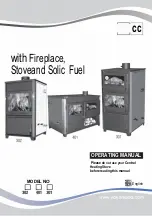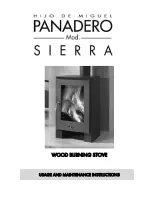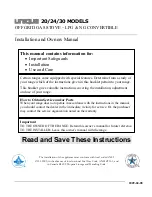
© EUROHEAT DISTRIBUTORS (H.B.S) LTD. Feb 2011
E & OE Instructions Part number IN1144 Ed. A
5
Bends in flue pipe
Top exit
A flue pipe shall have no more than four bends, each providing a maximum change of direction of 45º, there
should be not more than two of these bends before an access point for sweeping and two between a sweeping
point and the flue terminal.
On top exit stoves, ideally the flue should rise vertically 1 meter before the first bend. It is permissible to have a
bend no greater than 45° from the top flue outlet, or off the top of a “T” piece, as long as it does not adversely
effect the flue draught.
Back exit
For a back outlet application using a “T” piece, this should be treated as two 45º bends. If a “T” piece is to be
used, the horizontal flue run from the back outlet of the stove shall only be used to connect the stove to a “T”
piece and shall not be more than 150mm in length.
Chimney and Flues
For information on flues see the Technical Guide IN1173 supplied with the stove.
Adequate access for sweeping must be provided.
It is not possible to sweep a flue through a Harmony multifuel boiler stove.
Carbon Monoxide Alarms
Where a new solid fuel stove is installed in a property a carbon monoxide alarm should be located in the same
room where the appliance is located:
a. on the ceiling at least 300mm from any wall or, if it is located on a wall, as high up as possible (above any
doors and windows) but not within 150mm of the ceiling; and
b. between 1m am 3m horizontally from the appliance.
Carbon monoxide alarms should comply with BS EN 50291:2001 and be powered by a battery designed to
operate for the working life of the alarm. The alarm should incorporate a warning device to alert users when the
working life of the alarm is due to end. Mains-powered BS EN 50291 Type A carbon monoxide alarms with fixed
wiring (not plug in types) may be used as alternative applications provided they are fitted with a sensor failure
warning device.






































